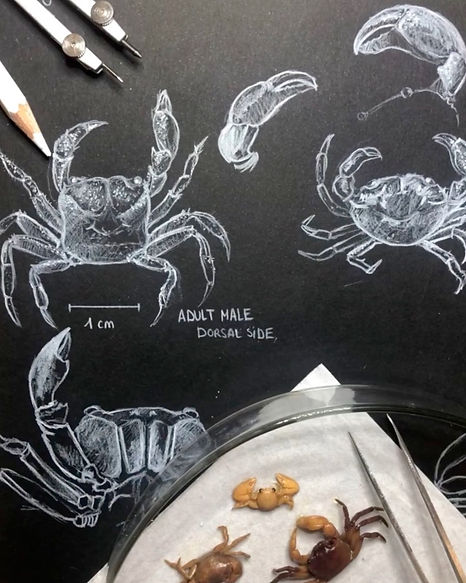DRAW for BIODIVERSITY

SCIENTIFIC DRAWINGS
Made after consultation of specimens
2022 - 2024 in situ
Paleontological collections, MNHN Paris 2023 - Photo credit Estelle Cruz 2024
Technical drawings describing new species made from specimens in collaboration with research institutions and natural history museums.
Scientific drawing
"Scientific drawing aims to interpret and illustrate through graphic techniques
the eternal dialogue between man and science ", Pascal Le Roc'h · Natural History Museum of Paris, 2024
Scientific drawing in small point, or stippling, emerged during the 18th century. This technique was popularized by engravers and illustrators of the time in order to create sharp contrasts and realistic representations of scientific subjects. In the 19th century, the improvement of printing techniques and the popularity of illustrated encyclopedias allowed the development of stippling, which became a standard technique for illustrating scientific publications (description of new species, illustrations, etc.). Today, many scientific illustrators continue to use this technique for its precision and complementary aesthetic to the photographs and digital techniques used in publications.

Production steps
from specimen to scientific drawing
// Step 1 · Define the scientific objective with the researchers and the targeted deliverables (publications, posters, etc.).
// Step 2 · Sketches for validation of views (plans, sections, axonometry) and scale
// Step 3 · Creation of boards and shading of the different plans with small dots
// Step 4 · Revision and final rendering . Latest modifications and digitization. Added scales and legends.

SCIENTIFIC PARTNERS


